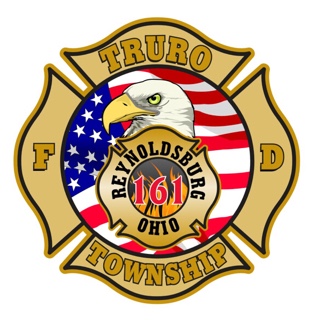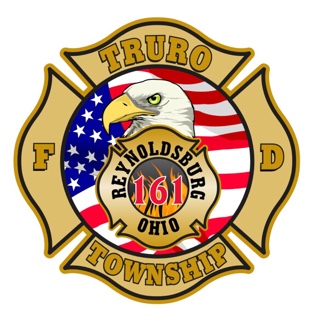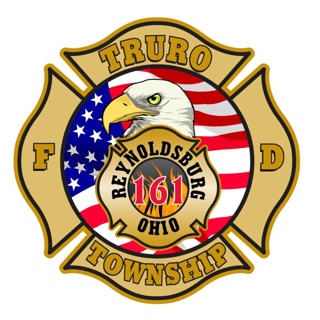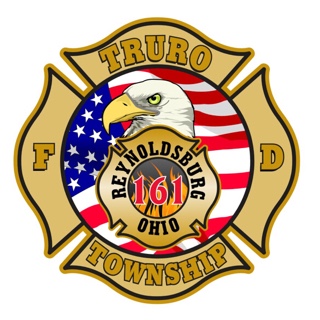Information
-
Document No.
-
Audit Title
-
Client / Site
-
Conducted on
-
Prepared by
-
Location
-
Personnel
Contacts
-
Property Representative (Name, Phone #, Email )
-
Property Owner (Name, Phone #, Email )
-
Emergency Contact 1 (Name, Phone # )
-
Emergency Contact 2 (Name, Phone # )
-
Referring Agency - Agency Phone #
Preplan
-
Preplan Drawing (OverHead)
-
Preplan Photos A,B,C,D sides
Building Pre-plan Information
-
Hydrant Locations and Information?
-
Add media
-
Knox Box (if yes enter location)
-
Location
-
Add media
-
Annunciator Panel (if yes enter location)
-
Location
-
Add media
-
Gas Service (if yes enter location)
-
Location
-
Add media
-
Electric Service Location
-
Add media
-
Special Hazards ( if yes list hazards)
-
Hazard Present and Location
-
Add media
-
Number of Stories Above Grade
-
Number of Stories Below Grade
-
Construction Type
- Fire-Resistive
- Noncombustible
- Ordinary
- Heavy Timber
- Wood Frame
-
Sprinkler System installed?
-
Occupancy Group
- A - Assembly
- B - Business
- E - Educational
- F - Factory/Industrial
- H - High Hazard
- I - Institutional
- M - Mercantile
- R - Residential
- S - Storage
- U - Miscellaneuos
-
Occupancy Group Comments
-
Pictures
General
-
Valid Occupancy Permit
-
NOTICE OF VIOLATIONS
(a) 102.3.1 Certificate of occupancy. A responsible person shall maintain a copy of the current certificate of occupancy, for a structure regulated by the building code as listed in rule 1301:7-7-47 of the Administrative Code and make it available to the fire code official upon request. This paragraph only applies to a certificate of occupancy in existence as of the effective day of this rule issued by a building official and/or a certificate of occupancy issued by a building official after the effective date of this rule.
(c) 105.3.3 Occupancy.
(i) 105.3.3.1 Acceptance testing of fire protection systems. Prior to the issuance by the building official of any certificate of occupancy for any building subject to paragraph (D)(2)(a)(104.2.1) of this rule, the responsible person shall notify the fire code official to be present to witness the acceptance testing of all fire protection systems.
(ii) 105.3.3.2 Final inspection. Prior to the issuance by the building official of any certificate of occupancy for any building subject to paragraph (D)(2)(a)(104.2.1) of this rule, the responsible person shall notify the fire code official to conduct a final inspection. The fire code official shall report any deficiencies of the fire protection systems to the building official.
(iii) 105.3.3.3 Minimum conditions for safe occupancy. No structure, premises or building, or any portion thereof, shall be occupied unless:
(a) 105.3.3.3.1 Such structures, premises or buildings or portions thereof are in substantial compliance with the applicable provisions of this code and the building code as referenced in rule 1301:7-7-47 of the Administrative Code; or
(b) 105.3.3.3.2 The structure, premises or building, or any portion thereof, does not constitute a distinct hazard to life or property in accordance with the provisions of this code. -
Are the utilities in good working condition? (HVAC, Water, Electrical)
-
NOTICE OF VIOLATIONS
(G) Section 107 Maintenance
(1) 107.1 Maintenance of safeguards. Whenever or wherever any device, equipment, system, condition, arrangement, level of protection, or any other feature is required for compliance with the provisions of this code, or otherwise installed, such device, equipment, system, condition, arrangement, level of protection, or other feature shall thereafter be continuously maintained in accordance with this code and applicable referenced standards.
Exits, Doors, Egress, Signs and Lighting
-
Are Egress Pathways Clear & Unobstructed?
-
NOTICE OF VIOLATION
(DD) Section 1030 Maintenance of the means of egress
(1) 1030.1 General. The means of egress for buildings or portions thereof shall be maintained in accordance with this paragraph.
(2) 1030.2 Reliability. Required exit accesses, exits or exit discharges shall be continuously maintained free from obstructions or impediments to full instant use in the case of fire or other emergency when the areas served by such exits are occupied. Security devices affecting means of egress shall be subject to approval of the fire code official.
(3) 1030.3 Obstructions. A means of egress shall be free from obstructions that would prevent its use, including the accumulation of snow and ice. -
Are the Exit Doors Locked or Blocked?
-
NOTICE OF VIOLATION
(DD) Section 1030 Maintenance of the means of egress
(1) 1030.1 General. The means of egress for buildings or portions thereof shall be maintained in accordance with this paragraph.
(2) 1030.2 Reliability. Required exit accesses, exits or exit discharges shall be continuously maintained free from obstructions or impediments to full instant use in the case of fire or other emergency when the areas served by such exits are occupied. Security devices affecting means of egress shall be subject to approval of the fire code official. -
Are exits free of decorations and clearly visible?
-
NOTICE OF VIOLATIONS
Maintenance of the means of egress
(1) 1030.1 General. The means of egress for buildings or portions thereof shall be maintained in accordance with this paragraph.
(6) 1030.6 Furnishings and decorations. Furnishings, decorations or other objects shall not be placed so as to obstruct exits, access thereto, egress therefrom, or visibility thereof Hangings and draperies shall not be placed over exit doors or otherwise be located to conceal or obstruct an exit. Mirrors shall not be placed on exit doors. Mirrors shall not be placed in or adjacent to any exit in such a manner as to confuse the direction of exit.
Fire Rated Assemblies
-
Are the fire rated assemblies intact, are required ceiling tiles in intact?
-
NOTICE OF VIOLATIONS
OFC SECTION 703 FIRE-RESISTANCE-RATED CONSTRUCTION (C)
703.1 Maintenance.
The required fire-resistance rating of fire-resistance-rated construction (including walls, firestops, shaft enclosures, partitions, smoke barriers, fire-resistive coatings and sprayed fire-resistant materials applied to structural members and fire-resistant joint systems) shall be maintained. Such elements shall be visually inspected by the owner annually and properly repaired, restored or replaced when damaged, altered, breached or penetrated. Where concealed, such elements shall not be required to be visually inspected by the owner unless the concealed space is accessible by the removal or movement of a panel, access door, ceiling tile or similar movable entry to the space. Openings made therein for the passage of pipes, electrical conduit, wires, ducts, air transfer openings and holes made for any reason shall be protected with approved methods capable of resisting the passage of smoke and fire. Openings through fire-resistance-rated assemblies shall be protected by self- or automatic-closing doors of approved construction meeting the fire protection requirements for the assembly.
703.1.3 Fire walls, fire barriers and fire partitions.
Required fire walls, fire barriers and fire partitions shall be maintained to prevent the passage of fire. All openings protected with approved doors or fire dampers shall be maintained in accordance with NFPA 80 as listed in rule 1301:7-7-47 of the Administrative Code.
Housekeeping & Storage
-
Is mechanical room free from combustible storage & a minimum 36" clearance maintained between heating equipment & storage?
-
NOTICE OF VIOLATION
OFC SECTION 315 MISCELLANEOUS COMBUSTIBLE MATERIALS STORAGE (O)
315.2.3 Equipment rooms.
Combustible material shall not be stored in boiler rooms, mechanical rooms or electrical equipment rooms. -
Are good housekeeping practices followed?
-
NOTICE OF VIOLATIONS
(O) Section 315 Miscellaneous combustible materials storage
(1) 315.1 General. Storage, use and handling of miscellaneous combustible materials shall be in accordance with this paragraph. A permit shall be obtained in accordance with rule 1301:7-7-01 of the Administrative Code.
(2) 315.2 Storage in buildings. Storage of combustible materials in buildings shall be orderly. Storage shall be separated from heaters or heating devices by distance or shielding so that ignition cannot occur.
Laundry Rooms
-
Are clothes dryers free from lint accumulations?
-
NOTICE OF VIOLATIONS
(D) Section 304 Combustible waste material
(1) 304.1 Waste accumulation prohibited. Combustible waste material creating a fire hazard shall not be allowed to accumulate in buildings or structures or upon premises. -
Is the dryer properly vented?
-
NOTICE OF VIOLATIONS
(B) Section 102 Applicability
(4) 102.4 Application of building code. The planning, design and construction of new buildings and structures to provide the necessary egress facilities, fire protection, and built-in fire protection equipment shall be controlled by the building code of the jurisdiction; and any alterations, additions or changes of occupancy in buildings required by the provisions of this code which are within the scope of the building code shall be made in accordance therewith.
SECTION 504
CLOTHES DRYER EXHAUST
504.6 Domestic clothes dryer ducts. Exhaust ducts for domestic clothes dryers shall conform to the requirements of Sections 504.6.1 through 504.6.7.
504.6.1 Material and size. Exhaust ducts shall have a smooth interior finish and shall be constructed of metal a minimum 0.016 inch ( 0.4 mm) thick. The exhaust duct size shall be 4 inches (102 mm) nominal in diameter.
504.6.2 Duct installation. Exhaust ducts shall be supported at 4-foot (1219 mm) intervals and secured in place. The insert end of the duct shall extend into the adjoining duct or fitting in the direction of airflow. Ducts shall not be joined with screws or similar fasteners that protrude into the inside of the duct.
504.6.3 Transition ducts. Transition ducts used to connect the dryer to the exhaust duct system shall be a single length that is listed and labeled in accordance with UL 2158A. Transition ducts shall be a maximum of 8 feet (2438 mm) in length and shall not be concealed within construction.
Electrical
-
Is the area around the electric panel clear? (Minimum clearance shall be 30"W x 76"H x 36"D)
-
NOTICE OF VIOLATIONS
(E) Section 605 Electrical equipment, wiring and hazards
(3) 605.3 Working space and clearance. A working space of not less than 30 inches (762 mm) in width, 36 inches (914 mm) in depth and 78 inches (1981 mm) in height shall be provided in front of electrical service equipment. Where the electrical service equipment is wider than 30 inches (762 mm), the working space shall not be less than the width of the equipment. No storage of any materials shall be located within the designated working space.
Exceptions:
1. Where other dimensions are required or allowed by NFPA 70 as listed in rule 1301:7-7-47 of the Administrative Code.
2. Access openings into attics or under-floor areas which provide a minimum clear opening of 22 inches (559 mm) by 30 inches (762 mm). -
Are extension cords being used as permanent wiring and/or running through walls or above ceilings?
-
NOTICE OF VIOLATIONS
(E) Section 605 Electrical equipment, wiring and hazards
(5) 605.5 Extension cords. Extension cords and flexible cords shall not be a substitute for permanent wiring. Extension cords and flexible cords shall not be affixed to structures, extended through walls, ceilings or floors, or under doors or floor coverings, nor shall such cords be subject to environmental damage or physical impact. Extension cords shall be used only with portable appliances. -
Are there electrical hazards present? (Open boxes, exposed wiring, open breakers)
-
NOTICE OF VIOLATIONS
(E) Section 605 Electrical equipment, wiring and hazards
(1) 605.1 Abatement of electrical hazards. Identified electrical hazards shall be abated. Identified hazardous electrical conditions in permanent wiring shall be brought to the attention of the responsible code official. Electrical wiring, devices, appliances and other equipment that is modified or damaged and constitutes an electrical shock or fire hazard shall not be used. -
Are outlets, switches, junction boxes and/or panel boxes missing cover plates?
-
NOTICE OF VIOLATIONS
(E) Section 605 Electrical equipment, wiring and hazards
(6) 605.6 Unapproved conditions. Open junction boxes and open-wiring splices shall be prohibited. Approved covers shall be provided for all switch and electrical outlet boxes. -
Are non-approved appliances in use?
-
NOTICE OF VIOLATIONS
(E) Section 605 Electrical equipment, wiring and hazards
(1) 605.1 Abatement of electrical hazards. Identified electrical hazards shall be abated. Identified hazardous electrical conditions in permanent wiring shall be brought to the attention of the responsible code official. Electrical wiring, devices, appliances and other equipment that is modified or damaged and constitutes an electrical shock or fire hazard shall not be used.
(7) 605.7 Appliances. Electrical appliances and fixtures shall be tested and listed in published reports of inspected electrical equipment by an approved agency and installed and maintained in accordance with all instructions included as part of such listing. -
Are multi-plug adapters in use?
-
NOTICE OF VIOLATIONS
(E) Section 605 Electrical equipment, wiring and hazards
(4) 605.4 Multiplug adapters. Multiplug adapters, such as cube adapters, unfused plug strips or any other device not complying with NFPA 70 as listed in rule 1301:7-7-47 of the Administrative Code shall be prohibited. -
Are Power strips UL approved and installed properly
-
NOTICE OF VIOLATIONS
(E) Section 605 Electrical equipment, wiring and hazards
(a) 605.4.1 Power tap design. Relocatable power taps shall be of the polarized or grounded type, equipped with overcurrent protection, and shall be listed in accordance with UL 1363 as listed in rule 1301:7-7-47 of the Administrative Code.
(b) 605.4.2 Power supply. Relocatable power taps shall be directly connected to a permanently installed receptacle.
(c) 605.4.3 Installation. Relocatable power tap cords shall not extend through walls, ceilings, floors, under doors or floor coverings, or be subject to environmental or physical damage.
Emergency Planning
-
Are evacuation plans properly posted?
-
NOTICE OF VIOLATIONS
(b) 404.5.2 An evacuation plan indicating the primary and secondary emergency evacuation routes, and including proper occupant-to-building orientation, shall be permanently and conspicuously posted at the main exit door inside of each room accessible to all persons in all educational occupancies. The plan shall not be obscured from view by any materials. -
Are fire drills conducted monthly
-
NOTICE OF VIOLATIONS
(E) Section 405 Emergency evacuation drills
(1) 405.1 General. Emergency evacuation drills complying with the provisions of this paragraph shall be conducted at least annually in the occupancies listed in paragraph (D)(2)( 404.2 ) of this rule or when required by the fire code official. Drills shall be designed in cooperation with the local authorities.
(a) 405.1.1 A principal or person in charge of a public or private school or education institution having an average daily attendance of twenty or more pupils, shall instruct and train such children by means of drills or rapid dismissals at least nine times during the school year at the times and frequency prescribed in this rule, so that such children in a sudden emergency may leave the building in the shortest possible time without confusion in compliance with section 3737.73 of the Revised Code and this rule. A person in charge of any children's home or orphanage housing twenty or more minor persons shall instruct and train such children by means of drills or rapid dismissals at least once each month while the home is in operation. -
Number of fire drills conducted per year?
- 1
- 2
- 3
- 4
- 5
- 6
- 7
- 8
- 9
- 10
- 11
- 12 or more
-
Are tornado drills conducted?
-
NOTICE OF VIOLATIONS
(I) Section 409 Tornado shelters in schools
(1) 409.1 Pursuant to section 3737.73 of the Revised Code, principals or persons in charge of public or private primary and secondary schools or educational institutions having an average daily attendance of twenty or more pupils shall designate appropriate locations in their respective facilities to be used to shelter pupils in case of a tornado, tornado alert, or tornado warning. The designation of such locations shall be in accordance with the standards prescribed by the fire marshal, as set forth herein. However, nothing in these rules shall be construed as requiring a school or institution to construct or improve a facility or area thereof for use as a tornado shelter, or to install a tornado alarm system.
-
Is artworks and teaching materials on walls < than 20% of wall area? (Group E)
-
NOTICE OF VIOLATIONS
(c) 807.4.3 Group E. The requirements in paragraphs (G)(4)(c)(i)(807 4.3.1) and (G)(4)(c)(ii)(807 4.3.2) of this rule shall apply to occupancies in Group E.
(ii) 807.4.3.2 Artwork. Artwork and teaching materials shall be limited on the walls of corridors to not more than 20 per cent of the wall area. -
Is clothing stored in corridors?
-
NOTICE OF VIOLATIONS
(c) 807.4.3 Group E. The requirements in paragraphs (G)(4)(c)(i)(807 4.3.1) and (G)(4)(c)(ii)(807 4.3.2) of this rule shall apply to occupancies in Group E.
(i) 807.4.3.1 Storage in corridors and lobbies. Clothing and personal effects shall not be stored in corridors and lobbies.
Exceptions:
1. Corridors protected by an approved automatic sprinkler system installed in accordance with paragraph (C)(3)(a)(i)(903.3.1.1) of rule 1301:7-7-09 of the Administrative Code.
2. Corridors protected by an approved smoke detection system installed in accordance with paragraph (G)(907) of rule 1301:7-7-09 of the Administrative Code.
3. Storage in metal lockers, provided the minimum required egress width is maintained.
Residential Facilities Only
-
Occupancy Type:
-
Structure Type:
-
Ad there UL approved smoke detectors on each level & in each sleeping area?
-
Is a fire extinguisher present in the cooking area? (minimum 2A-10BC)
-
Is the basement approved as an occupiable space? (must have 2 ways out)
-
Is the calendar of of fire drills approved?
-
Is the facility reasonably free from hazards at the time of inspection?
-
Is the facility approved?
-
Is the evacuation plan approved?
Violations
-
Were violations found?
-
NOTICE OF VIOLATIONS
(I) Section 109 Violations
(1) 109.1 Unlawful acts. It shall be unlawful for a person, firm or corporation to erect, construct, alter, repair, remove, demolish or utilize a building, occupancy, premises or system regulated by this code, or cause same to be done, in conflict with or in violation of any of the provisions of this code.
(a) 109.1.1 Fire code enforcement. If upon inspection or investigation, the state fire marshal, an assistant state fire marshal, or a certified fire safety inspector believes that the state fire code or associated order has been violated, the state fire marshal, assistant state fire marshal, or certified fire safety inspector shall issue a citation to the responsible person in accordance with section 3737.42(A) of the Revised Code and paragraph (I)(3)( 109.3 ) of this rule.
(i) 109.1.1.1 If a violation of this code has no direct or immediate relationship to safety or health, the state fire marshal, assistant state fire marshal, or the certified fire safety inspector may issue a notice in lieu of a citation with respect to such de minimis violation in accordance with section 3737.42(B) of the Revised Code and paragraph (I)(2)( 109.2 ) of this rule. If such violations are not remedied within the time frame established by the fire code official, such official may issue a citation in accordance with section 3737.42(A) of the Revised Code.
(b) 109.1.2 Enforcement to remedy dangerous conditions. If the state fire marshal, assistant state fire marshal, or certified fire safety inspector, upon examination or inspection, finds a building or other structure especially liable to fire or endangers life or other buildings or property, or finds a building or any premises with combustible, explosive or flammable materials which are dangerous to the safety of persons finds any structure, tank, container or vehicle used for the storage, handling or transportation of flammable or combustible materials to be dangerous to the safety of persons, the state fire marshal, assistant state fire marshal, or certified fire safety inspector shall issue a citation in accordance with section 3737.41 of the Revised Code and paragraph (I)(3)( 109.3 ) of this rule.
(2)109.2 Notice of de minimis violation. When the fire code official finds a building, premises, vehicle, storage facility or outdoor area that is in violation of this code, but such a violation has no direct or immediate relationship to safety or health, the fire code official is authorized to prepare a written notice of violation describing the conditions deemed unsafe and, when compliance is not immediate, specifying a time for reinspection.
-
Additional Violations not listed Above?
-
Were violations corrected at the time of inspection?
-
Is a follow-up inspection Required?
-
Date Violations shall be corrected by.
-
Violations Found (Number Violations)
-
Facility Represenative
-
Inspector
-
For questions about this inspection please contact the Truro Township Fire Department Fire Prevention Bureau at (614) 729-1920.









